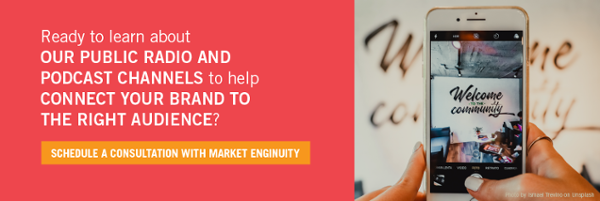What Podcast Rankings Mean and How Much They Matter
In today’s media-buying landscape, scale is crucial. After all, you could have the greatest sponsorship copy the world has ever heard or have a groundbreaking product, but it won’t matter if your message doesn’t reach anybody.
One of the greatest obstacles marketers face is that they have limited capacity to choose the spots and sponsorships that are best for their brand. They also are often looking to work with platforms that can provide a significant reach, both within the confines of individual shows and across entire radio or podcast networks. This is where it pays to know the ins and outs of podcast rankings.
Below is a breakdown of how podcasts are ranked, what these rankings mean and why they matter for sponsors.
How Podcasts Are Ranked
There are multiple metrics used to rank podcasts and their publishers. These can help marketers who are seeking to improve brand awareness through sponsorship find the audience they are targeting, be it in terms of size, by genre, or through other factors.
Ranking services like Podtrac allow advertisers to see how podcasts grow, which category best defines each show and how many listeners they have in the U.S. and beyond.
However, most ranking services also look at the overall rankings of various podcast publishers in addition to individual shows. For example, Podtrac monitors the number of podcast listeners each publisher has, along with rankings for individual programs and other breakdowns of audience metrics. This industry benchmark also shows how many global downloads and streams each podcast publisher has on a monthly basis.
Choosing Podcasts with Rankings in Mind
While being able to track the shifts in positioning is certainly a boon for helping advertisers stay front and center with the key agencies and clients in the space, it would be wise to look at a broader spectrum of options.
After all, finding a podcast that boasts a more modest audience that’s more likely to convert on product sponsorships is worth its weight in gold for anyone looking to gain more than just brand revenue within that space.
While searching for a less popular podcast in the traditional sense can mean having to do a little more digging, there are increasingly more ways to learn what shows are on what networks and how to reach their respective sales teams. There are also services to make the search easier with data that’s relevant or exclusive to the podcasting space. This includes Magellan, a subscription-based service which amongst other things, helps connect media buyers with publishers of all stripes and scale.
What Rankings Really Mean for Advertising on Podcasts
Ultimately, while size and global rankings can say a lot about the credibility or capacity of any given network to provide marketers a range of media options, rankings should be taken with a grain of salt when considering media options. Rankings are a valuable tool to use when choosing the podcast that’s right for your marketing strategy or campaign, but the publishers with the most listeners may not always be the clear best platform for finding your target audience.
Fact is, it’s rare if ever that a brand would consider purchasing the entire inventory of any network or show.
To that, working with an eye towards what is the best audience alignment and execution for your brand is the most effective way to leverage podcasting as a platform and of course, generate meaningful ROI.
Learn more about the ins and outs of podcast advertising by subscribing to the Market Enginuity Podcast Group newsletter.
Whether you’re interested in sponsoring one of our public media stations or learning more about turnkey sponsorship representation for your station, we can help. Complete the form, and we’ll be in touch soon.
Subscribe
Every week we share insights, industry news or best practices on public media sponsorship. Receive a weekly digest of our latest blog posts so you’re always in the know.
